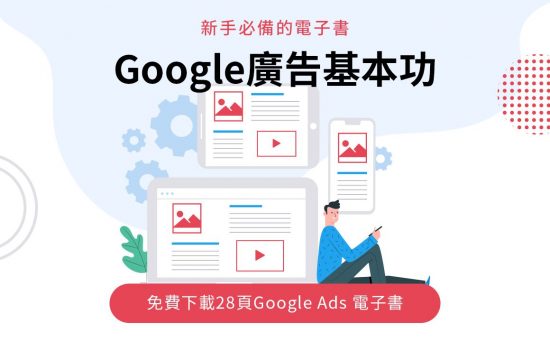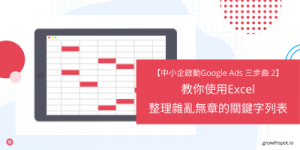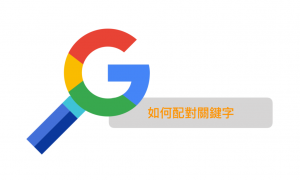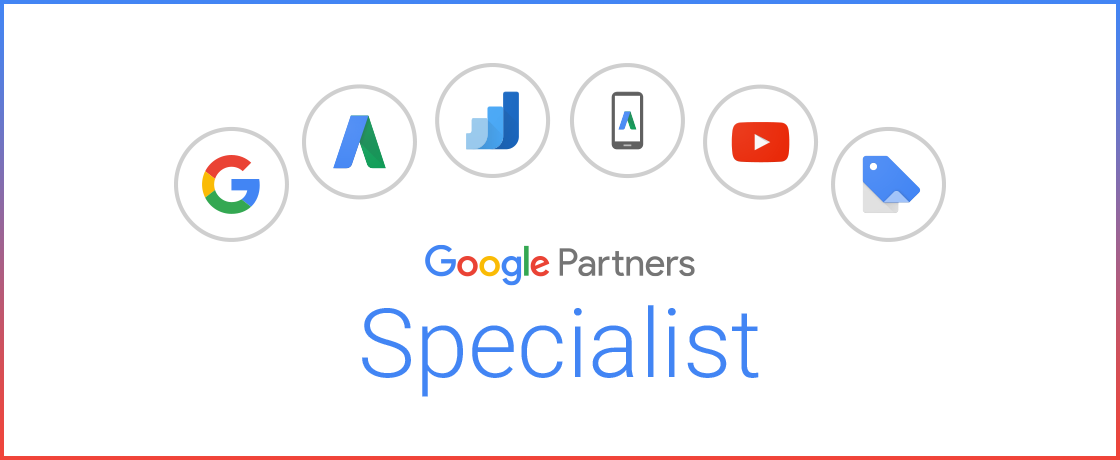Are you struggling to get web traffic?
Have you read many “ultimate guides” and blogs and still not sure how to get the right targeted traffic to your website?
Don’t worry, you’re not alone. In this article, we will talk about online advertising and how to get the never-ending source of traffic.
Whether it’s about Online Advertising or SEO, understanding your audience or the target market is critical for your business success.
There are a lot of online advertising methods available; choosing the one where your target user hangs out is essential.
To help your business expand its reach, find new leads and have multiple revenue sources, Paid Traffic has become very important in 2019.
Before we dive into the methods, ask yourself these guiding questions first:
- Do you understand your target audience?
- Are you optimizing funds by targeting appropriate mediums or are you spreading yourself too thin?
- Are you open to being patient in experimenting and measuring the effectiveness of multiple strategies?
- Is this a large enough undertaking which would be best employed with assistance, allocating employees, or asking for managers?
Benefits of Online Advertising
Unlike SEO, which gives free traffic, Paid advertising can be better if you are looking for quick results.
As free traffic takes time to rank, paid efforts can give you an edge to grab some juicy traffic for your product or service pages.
Search Engine Marketing (SEM)
While search engine optimization is making sure your websites, socials, and other relevant online media is curated to be the first result in a search engine.
The goal is to optimize your SEO strategy enough to where your chosen keywords lead you to that first page on a Google search.
On the other hand, search engine marketing requires you to bid for particular keyword to bring your brand, service, or product to pop up in curated search engine searches.
The customer base that SEM produces is more authentic. Because they are seeking your business, they tend to be more open-minded to become a customer because they are already interested in your product/services.
SEM also has the advantage of providing thorough analytics, which is collected in the background with no extra energy required. This will help your targeting and product management in the future.
Types of Paid Advertising
- Paid Search
- Paid Social
What is Paid Search?
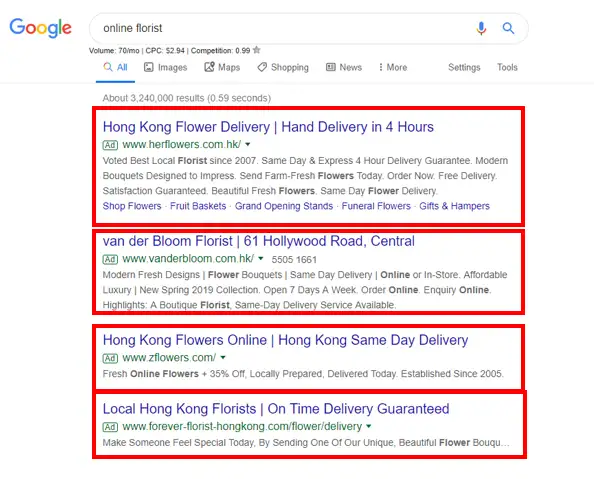
Online advertising has improved many businesses since the rise of the internet by providing them with a constant source of high-quality traffic that converts.
Paid search become highly popular with the rise of Google Adwords Network, with over 95 billion dollars spent every single year.
This number is only expected to increase over the year as more and more businesses have understood the power of Paid Search.
Paid search spins around an advertiser paying a search engine like Google to promote their website to particular users.
The keywords target specific users that they search for and the location of the user.
Combining these two targeting options allows advertisers to target their perfect demographic much more straightforward.
This helps businesses to get much better ROI over their spend.
The ads follow strict guidelines and only allow text-only ads to help it blend with the organic search results.
KPI’s of Paid Search
- Spend
- Clicks
- Click-Through Rate (CTR)
- Cost Per Click (CPC)
- Impressions
- Conversion Rate
What is Paid Social?

Paid Social is the breakthrough in the advertising industry which has attracted many businesses.
Run by huge websites like Facebook, Instagram, LinkedIn, Twitter, paid social is a different type of advertising that allows advertisers to target individuals based on their likes.
Unlike SEM where we target users based on particular keywords, in paid social advertisers can target users based on their demographics, likes and interests.
Facebook and Instagram have over 3 billion combined users and more than 24 billion monthly traffic, it’s obvious why advertisers and businesses are super attracted towards paid social.
Compared to SEM where text-only ads are allowed social media advertising enables businesses to display visual ads which helps a lot in improving the click-through rate and communication from users. It also allows advertisers to comment and interact with users.
KPI’s of Paid Social
- Clicks
- Impressions
- Click-Through Rate (CTR)
- Cost Per Click (CPC)
- Cost
- Positioning
- Conversions
- Cost Per Acquisition
- Search Impression
- Quality Score
Banner Advertising

Image Credit: Instapage
One of the pioneers of online advertising, display ads are much like the billboards of the internet.
Banners which appear in the sidebars of websites or on the headers are your display ads.
A viewer of this ad does not need to actively search for it in an engine.
They are passively viewed, therefore more often reinforcing brand awareness (not just a name), because they are already in place, very often at your choice of targeted location based on market segmentation research.
This is the main way they differ from SEO or PPC advertisements. It also works in wonderful conjunction with remarketing.
Display advertising is falling out of popularity due to the increase in usage of PPC and SEO advertising.
More and more individuals are installing ad-blockers in their browsers and smartphone so they are not bombarded with visual clutter.
Though there are many people who do not, a vast majority of your target audience may be cut because of an unwillingness to be exposed to advertisements.
Native Advertising

One of the well-hidden forms of advertising, native advertisements sneak into blog posts, social media feeds, and web pages with ease because they are specifically designed to have the aesthetic, structure, and tone of the website which is advertising it.
This takes the form of linked out advertisements in articles, sponsored content or product placement in YouTube videos, and branded content a company creates for another company and pays to have them host it in some way.
Affiliate marketing is also sometimes considered native, in which an individual or company receives a small commission from advertising a product or service.
When considering native advertising, you must focus on design as this is what attracts people in the first instance. Take some design inspiration from PackMojo’s Custom Mailer Boxes that may even help you in online advertising campaigns.
Native advertising is not known by name by the majority of the consumer public.
Though sometimes it is obvious, its lack of commercial usage can be utilized to its advantage.
People are aware of other advertising methods, and since this method can be more subliminal and seamless, it feels less aggressive to your consumers.
If you have an audience that is more aware of advertising methods, sometimes native advertising can be seen as disingenuous, as the intention of it is to hide as a native among other content.
It is sometimes difficult to find a balance in how to portray your ad, much less measure how viewers feel about that content unless there is a comments section or somewhere linking to reviews.
Remarketing or Retargeting
Have you ever experienced seeing an ad-based off something you recently purchased on Amazon?
This is remarketing at its finest; utilizing cookies, marketers track internet usage from users to make targeted advertisements in their upcoming internet adventures.
Remarketed or retargeted ads are being aimed at people who have already expressed interest in your idea or business.
This means your money is being spent on people who already care about what you have to sell.
In the beginning, remarketing has a low conversion rate because of that initial unsettling feeling of “being followed” by the internet.
However, over time these feelings fade and transform into simply feeling reminded of the product or service they were previously interested in. Sometimes it just takes time to convert.
Video Marketing
Consumption of online videos is increasing every day and for brands, videos have become the central part of the outreach and campaign efforts.
This is because consuming video content is one of the easiest forms to digest information, therefore, making it a great tactic for online marketing.
Being the most visual of the advertising methods, therefore attaching to more sensory targets than mere words or hyperlinks.
Video ads are simply good because more people can consume it, they are good at converting sales, are easier to share and search engines love it.
Videos can be expensive to create but tools like OFFEO can help you create YouTube Intros & Outros using pastel color design without breaking your bank.
Final Thoughts
Understanding the sides of each of these methods of marketing will increase your brand visibility in the best way possible.
Combining paid search with paid social can give much more visibility and tractions than doing one thing alone.
Do you have any questions on Online Advertising or any of the methods we just talked about? Feel free to comment and we will be happy to help you out.


